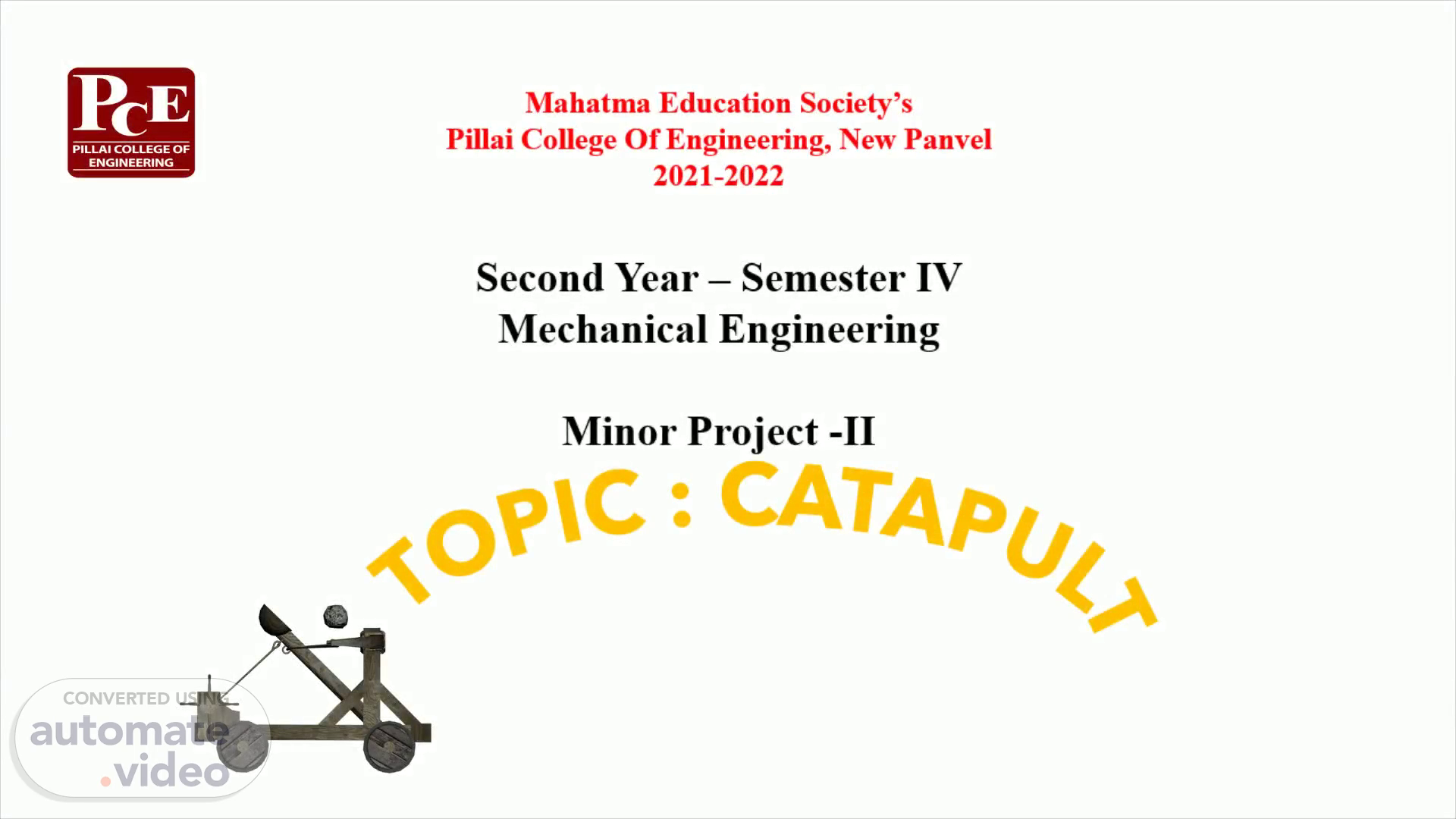Page 1 (0s)
Mahatma Education Society’s Pillai College Of Engineering, New Panvel 2021-2022 Second Year – Semester IV Mechanical Engineering Minor Project -II.
Page 2 (11s)
GROUP NO. 4. GROUP MEMBERS NAME ROLL NO. Kushal Deepesh Koli 427 Sibtain Husain Malgundkar 429 Ziyad Shaffakat Mullaji 437.
Page 3 (21s)
CATAPULT. abstract. A Catapult is a type of machine used as a weapon to throw rocks or other things, that would cause damage to something else. Often, catapults were set on higher ground or on castle towers to let them shoot farther. Catapults use weights and levers to send the rocks or other things into the air. They do not throw as far as modern weapons do, and are not useful in modern warfare. Catapults were common in the past, especially the Middle Ages. Nowadays catapults are used to study old weapons, and as experiments and some of the new weapons are based on this mechanism.
Page 4 (50s)
Types of Catapults. The Onager. The Ballista. The Mangonel.
Page 5 (1m 0s)
Individual design concept. abstract.
Page 6 (1m 10s)
Individual design concept. .
Page 7 (1m 20s)
Individual design concept. abstract.
Page 8 (1m 28s)
Main model of Catapult. .
Page 9 (1m 41s)
Merits And Demerits of Catapult. MERITS. DEMERITS L imited range Less accurate.
Page 10 (1m 50s)
DIFFERENT PART OF CATAPULT. Different parts of catapult are Rope puller Ball Main Body Thrower.
Page 11 (2m 2s)
A Catapult is a lunching device that allows us to experimentally observe projectile motion Once the ball is launched, the only forces acting are gravity and air resistance. Gravity accelerates the ball in the negative y direction. Air resistance accelerates the ball in the opposite direction of travel. In order to make a catapult useful, we will want to be able to predict where a projectile will land after launch. To do this, we need to calibrate the catapult. Calibration will take into account all accelerations (including air resistance). To calculate the motion, all NEWTONS LAWS OF MOTION are calculated ..
Page 12 (2m 29s)
Projectile motion. . Forces. The following forces acting on the ball are: Gravitational force Air resistant forces (Torsion force) Elastic force Formulas : By Newtons third law of Motion F=ma a= v/t.
Page 13 (2m 42s)
Take a series of measurements of distance of projectile travel as a function of launch angle record all data in cm. You should take at least three distance measurements for each angle and you should take measurements for as many angles between 0 and 90 degrees.
Page 14 (3m 20s)
Parameters through which distance can be varied..
Page 15 (3m 33s)
THANK YOU.
